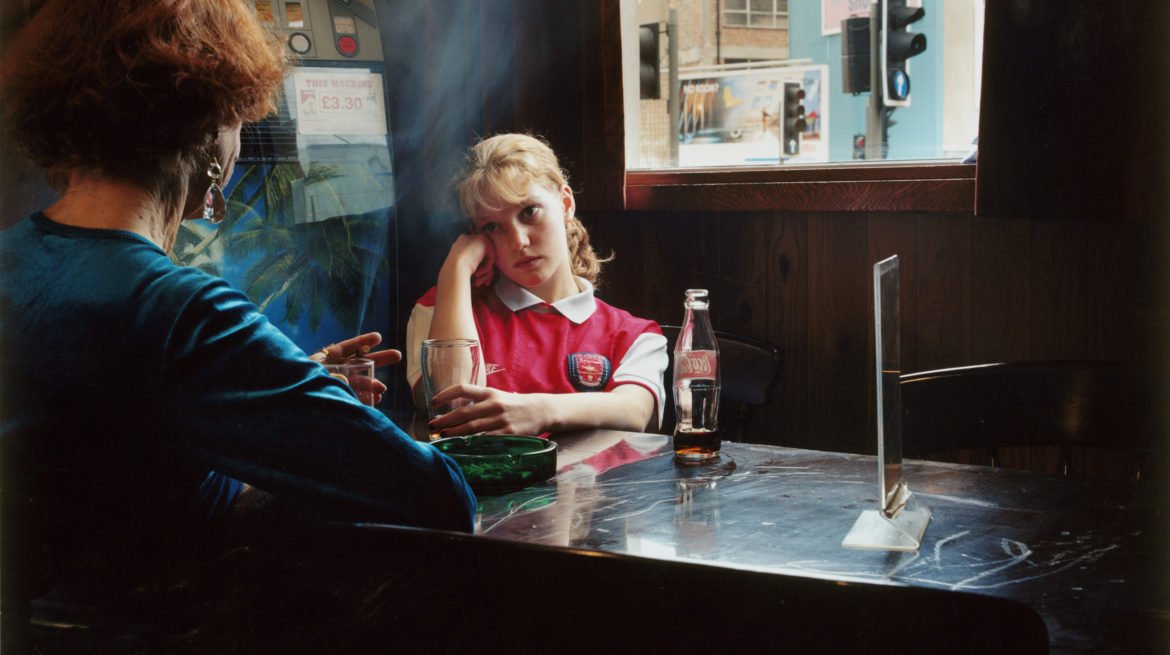Hannah Starkey
Doing some research into one of the people who inspires me serves to help me better understand my own journey, my dad always says “if you wish to know the road ahead, ask those coming back”. I’ve chosen Hannah because her work existed before my time and as such there is more information about her career available to me.
She was born into Belfast in 1971, and her British roots serve as inspiration to me due to the similarities in our origins. She studied photography as well as film at university, very similarly to what I am currently doing.
Her work is mainly centred around females and in my opinion serves as a voice for the female experience of the world. Most of her shots feature women in everyday situations like sitting in a cafe, or walking down the street. She also has ties to more urban settings with her street photography being centred in cities, mainly London.
In Cafes
This being a great example of her representation of females in everyday settings
On The Street
Her street photography can often feature a female against a backdrop like this
In The Home
Her work always seeing familiar settings for her audience and I love that she doesn’t need a studio to get the impactful looks
Something that I feel I learnt from consuming her work is that I don’t need to live anywhere special to take photos. She captured work that really inspires me and a lot of the work comes from places that I have access to myself, eg my home and the streets of my home. I learnt that mundanity is not an excuse for not taking photos, but rather if your surroundings are mundane then capture that. I have always valued the honesty of her work, accepting things as they are, not as she wished them to be.
She captured the emotions of those in the scene, and this is something that showed me how rich in narrative a photograph can be. I had so many misconceptions about photography when I started and Hannah Starkey’s work contradicted the ideas I had about what photography was “meant” to be. She saw the lives of those around her and captured how they felt. She also staged photographs but the difference between the canid and staged photos are almost indistinguishable. She conveys emotion, through her characters, framing, colours and overall attention to mise en scene.
In The Home Again
Her use of natural light is a big inspiration for me. I used to think I needed huge lighting set ups but she changed that belief
In The Cafe Again
This scene creates curiosity within me. What are they looking at? Is it a game of cards? Or a poster?
Having an education in film clearly supported her development of her style and creativity. She herself was quoted saying “In the beginning, I wanted to create a hybrid out of the different approaches I had been taught,” she says, “by somehow bringing together the emotive language of documentary with the slickness of advertising and the observational style of street photography”(Guardian 2018). Her combination of what she liked created new art built on the pre existing art of others, which is what I’m hoping to do with my own style. The strong sense of narrative just in one frame shows she was thinking about narrative, but also that the questions you may have looking at the image would’ve been what she experienced seeing those she shot. Her curiosity about the various lives around her is conveyed through her photographing of them, as if she didn’t think it was interesting she wouldn’t have shot it.
She was also simply herself. She wasn’t trying to emulate the male perspective that dominated the world of photography before her and wanted to communicate her experience of the world to others. She was quoted in an interview with The Guardian saying “I didn’t set out to have a feminist agenda, it was more that my interest in making work about women comes from the simple fact that I am one. That commonality of experience is at the heart of what I do as an artist.” (Guardian, 2018) This is important because she created what she wanted to see, not what she thought others wanted, and as a result that fact defined her success because it came from a genuine place.




